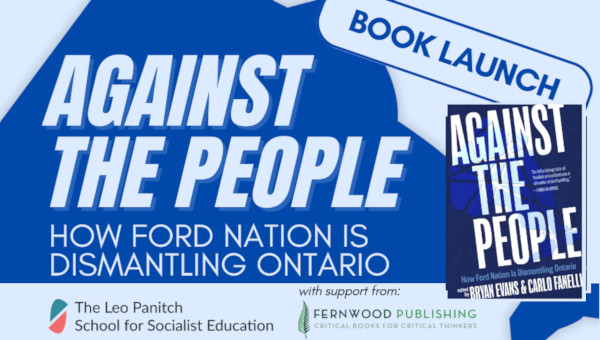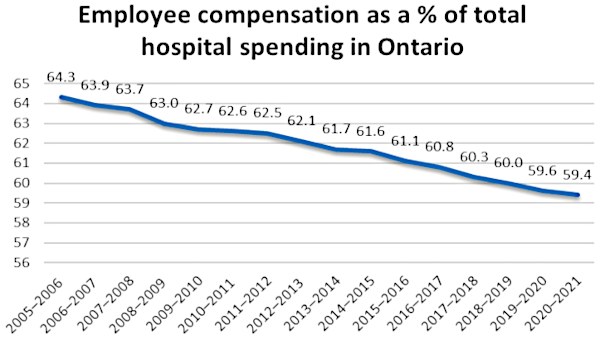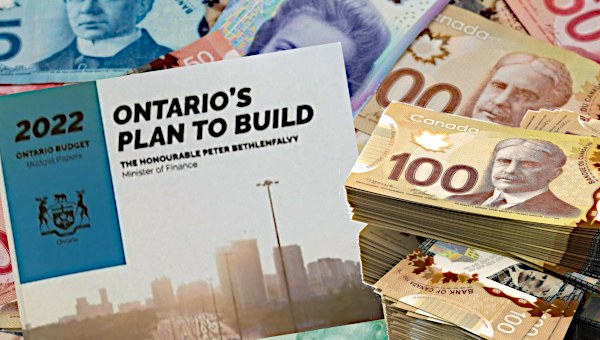A Spa Instead of Science: The Ford Government Strategy of Neglect, Tear Down and Take Away
Back in 2011 Doug Ford wanted a Ferris wheel. That was when he was a Toronto councillor and closest advisor to his brother, Mayor Rob Ford. Councillor Ford wanted Toronto to seize control of the port lands development from Waterfront Toronto, put up his Ferris wheel, build a monorail to run along the lakefront through hotels, backstopped by a 1.6 million square foot mega-mall – a shopper’s (and developers’) dream. It didn’t happen. It must have been bugging him ever since. Now it’s his provincial government that’s going to seize control, and hand over a huge portion of Ontario Place to private developers.
Doug Ford is the king of bad ideas, a perverse Robin Hood who takes from the poor and gives to the rich. He keeps his kingly gaze fixed on Toronto looking for new ways to hobble it by cutting city council in half, giving stronger powers to the mayor – provided they do what they’re told – and recently cooking a deal with Austrian firm Therme for a 95-year lease at Ontario Place so the company can build a 65,000 square foot private access spa. The murky arrangement between the Ford government and Therme sees the people of Ontario picking up the tab for a 2 100 car underground garage estimated to cost between $300 and $600-million. It’s a familiar tune: “Highway 407, Highway 413, Bradford Bypass, Greenbelt.” It’s not catchy, but it’s going to be an earworm for generations to come.
Anyone running for the mayoral by-election ought to oppose this plan – though you can forget about candidate and former Toronto police chief Mark Saunders. He was appointed by the Tories as a special advisor to Ontario Place back in 2021 and thinks it’s fine.
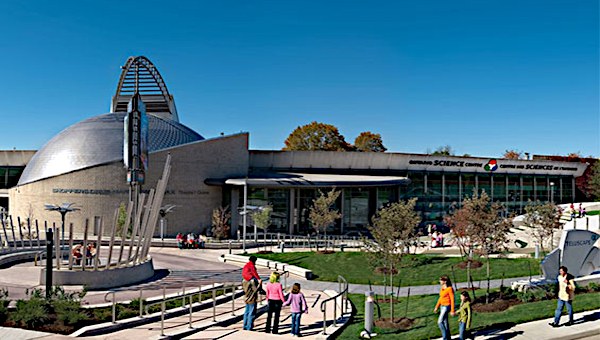
Not So Sleight of Hand
But there’s more to the story – another one of Doug Ford’s clumsy attempts at sleight of hand. Suddenly, at the end of April we heard that the venerable Ontario Science Centre is going to get torn down and a brand spanking new one plopped down on top of that 2 100 space parking garage. Badly needed housing, Mr. Ford says will take the place of the “old and rundown” hulk built nearly 55 years ago and therefore hopelessly past its prime and ready for a tear-down.
If you’re reading this, you’ve probably already come across the unfavourable remarks about the plan – the lack of consultation with anyone other than Tory friends, the fact that local residents of the Flemingdon and Franklin Park area have been stiffed, having a major attraction pulled out of their area, taking jobs away. It won’t be easy for them to travel to the new one. It’s a middle finger move to that community and anyone else who thinks major draws like the Science Centre should be distributed throughout the city.
There’s the minor detail – given Mr. Ford’s predilection for doing as he pleases with municipalities – that the land on which the Science Centre sits is actually owned by the city of Toronto and the Toronto Region Conservation Authority (TRCA). As TRCA’s Michael Tolensky told Global News last week, the land, sitting on steep banks near the Don River flood plain in the midst of vulnerable habitats – just isn’t buildable. And it’s not as though that’s the only place to house people in Toronto. The city owns 150,000 units across 8400 properties according to Mike Labbe CEO of Home Opportunities.
Tory infrastructure minister Kinga Surma insisted that a business case analysis showed it would cost more to repair the Science Centre than replace it, but couldn’t come up with the price tag on the repairs to a major heritage site designed by renowned architect, Raymond Moriyama. Why should it be falling apart? Builders used concrete with an expected lifespan of 250 years. In a letter to the Toronto Star last week, Mr. Moriyama referred to Doug Ford’s Tory predecessor John Robart’s foresight in calling for “an absolutely new cultural institution outside the downtown core, giving a cultural focus to the neglected north east sector of the city.
The reference to long-ago Premier Robarts is significant. It was his Progressive Conservative government that built the Science Centre and Ontario Place. Though Fordites go by the same name, they are clearly not progressive, nor are they conservative as far as taking care of things is concerned. They’re a cutting and tearing down sort of government.
This is where it’s worth looking at this story from the education perspective.
Taking the ‘Conserve’ out of Conservative
If the Tories were real conservatives, they would do just that – conserve. The Science Centre wouldn’t – if it actually is – be falling apart. It would be maintained. Over the years, they would have pushed to preserve other public buildings like schools. But along with interregnum Liberals, they didn’t. They let them decay so badly that it’s going to cost nearly $17-billion to do something about schools alone. Education Minister Stephen Lecce’s solution is to offer $15-billion over ten years for replacement and repair. He also says it takes too long to build a new school, so the Ford government is solving that problem by introducing Bill 98 giving it more power to do as it pleases with school board properties, while it opens up more opportunities for developers.
That solution comes from the party that started the problem – like an arsonist selling fire extinguishers. When Common Sense Revolutionary, Mike Harris took over school boards in the 1990s he began by squeezing funds. At $5.20 per square foot back then, there was never going to be enough money to maintain and replace schools. By 2001, the repair backlog was already at $5.6-billion. By 2016, Ontario’s auditor general said that the province needed to spend about $1.4-billion per year to keep schools in adequate shape. The Liberals at the time were putting out between $150 and $500-million. Toward the end of their tenure at Queen’s Park, the Liberals decided to spend that $1.4-billion each year to maintain schools. Then, as the repair bill kept rising, by 2019 Education Minister Stephen Lecce tried to get away with offering the same money for annual maintenance and even less money for long-term repair and replacement. As he piously noted: “after 15 years of dereliction of duty, where we had a multibillion-dollar backlog that we inherited, we must do more to improve our schools.”
So, there’s little doubt schools will have to be torn down and replaced – not because they’re just too old, but because governments over the past generation, haven’t bothered to maintain them or even develop a funding formula to ensure that school boards in which they sit have the money they need to function. The organization Fix Our Schools does a great service for the province by keeping tabs on the state of disrepair of school and other public buildings. Check out its website and you’ll see recent articles on the dire state of Toronto social housing, the $755-million needed to fix schools in Mississauga, another $611.8-million needed for school in Etobicoke. It goes on and on back to October 2014. The problem didn’t just suddenly appear.

Schools, like libraries and other public buildings were once an expression of civic pride.
Look at some of the Toronto schools like Central Tech at Bloor and Bathurst Streets, with its mischievous gargoyles overlooking the front entrance. Three Memorial schools in the west end of the city were built to honour the lives of soldiers who fought in the First World War. Even my old Laura Secord PS – shut down through school board amalgamation – in the tiny village of Queenston, boasted grand columns on the original building. When these and so many of the now-decrepit schools across the province were built, they were truly considered to be a common good, something of civic value like education, health care, roads and libraries. The local school boards that built them were numerous, close to the communities in which their trustees lived and shared a stake in the value of the schools they put up.
Common Good? What’s That?
But neoliberal governments of today have about as much room for the common good as they do for trivialities like openness and consultation. None of these things make any sense for governments whose foresight extends to the ends of their toes. They move fast and say “to hell with the consequences.” Pave over some of the best farmland in the country? Sure – if it means huge profits from monster homes. Build new highways to get to them a little faster? Sure – if it means construction companies and friends stand to rake in a fortune. Let schools rot? Sure – there’s plenty of money to be made on building new ones.
What will really happen to the Science Centre? The new one is supposed to be about half its size. What will happen to the school programmes currently operating out of it? What will happen to the jobs it provides? What about the neighbourhood it supports? What will happen when it turns out that you really can’t build housing on the old site? What assurances are there that any of it would be affordable? There aren’t any answers to those questions on the back of the napkin the Ford government appears to have been using to devise its plans.
Doug Ford and his fellow-travellers have demonstrated eloquently that “open for business” describes the core of their public thinking. It underscores the narrowness of their “get a job” education philosophy – resting on cutbacks and increased central control.
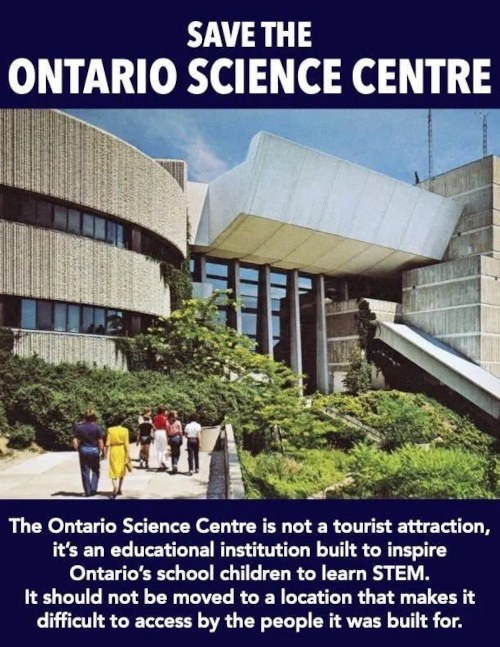
What About Another Tear-Down?
There’s another building in downtown Toronto that’s 130 years old, filled with lead pipes and asbestos everywhere, with a steam heating system that is considered to be a hazard and severely deficient. Surely, it’s not worth fixing. So, here’s an idea: tear down the Legislature Building at Queen’s Park, rebuild it on top of that parking lot at Ontario Place and use the vacant lot to build affordable housing. It works for everybody: easy access to the Therme spa for Tory MPPs and a great location further uptown for people who rather than sleeping rough in parks, would have a proper home to live in one of them. •
This article first published on the School Magazine website.


